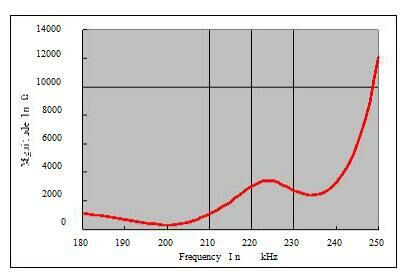200KHz Ultrasonic Distance Sensor, Measure Range 10 cm – 2 meters
Characteristic:
● Solid Package(Abs or Aluminum alloy shell)
● installation expediently(M20 * 1.5 Screw)
Application:
● Locating
● Flow measurement
● Escaped obstruction
● Approach measurement
● Traffic Measurement
● Robot

Technical parameters:
| Model | Ultrasonic Distance Sensor TA0200KC |
|---|---|
| Center Resonant Frequency(kHz) | 200KHz ± 4% |
| Bandwidth | 16 kHz |
| Detection Distance | 0.10~2m |
| Blind Spots | <0.10m |
| Launch Angle Beam(-3dB) | 14 ± 2° |
| Sensitive | -64dB min |
| Electrostatic Capacitance | 500PF ± 100PF |
| Minimum Parallel Impedance | 250Ω ± 30% |
| Maximum Working Voltage(Pulse – 2% duty cycle) | <500V |
| Operating Temperature | -20 ~ 80℃ |
| Storage Temperature | -40 ~ 85°C |
| Protection Level | IP65 |
| Size (diameter * height, mm) | φ16 x 20 |
| Installation | Circle fixed |
| Case Material | ABS or Aluminum alloy shell |
| Cable Length | 20cm (can be customized) |
| Weight | 10g |
Ceramic Ultrasonic Distance Sensor TA0200KC , it is a transducer that could transmit and receive signals.
Ultrasonic transducers convert AC into ultrasound, as well as the reverse. Ultrasonics, typically refers to piezoelectric transducers or capacitive transducers. Piezoelectric crystals change size and shape when a voltage is applied; AC voltage makes them oscillate at the same frequency and produce ultrasonic sound. Capacitive transducers use electrostatic fields between a conductive diaphragm and a backing plate.
The beam pattern of a transducer can be determined by the active transducer area and shape, the ultrasound wavelength, and the sound velocity of the propagation medium. The diagrams show the sound fields of an unfocused and a focusing ultrasonic transducer in water, plainly at differing energy levels.
Since piezoelectric materials generate a voltage when force is applied to them, they can also work as ultrasonic detectors. Some systems use separate transmitters and receivers, while others combine both functions into a single piezoelectric transceiver.
Ultrasound transmitters can also use non-piezoelectric principles. such as magnetostriction. Materials with this property change size slightly when exposed to a magnetic field, and make practical transducers.
Frequency-phase angle
Frequency-resistance
Sensitivity test: voltage:200Vp-p; cycle:50; distance:20cm
Directivity
The above tests were conducted in 25 ℃ environment.

